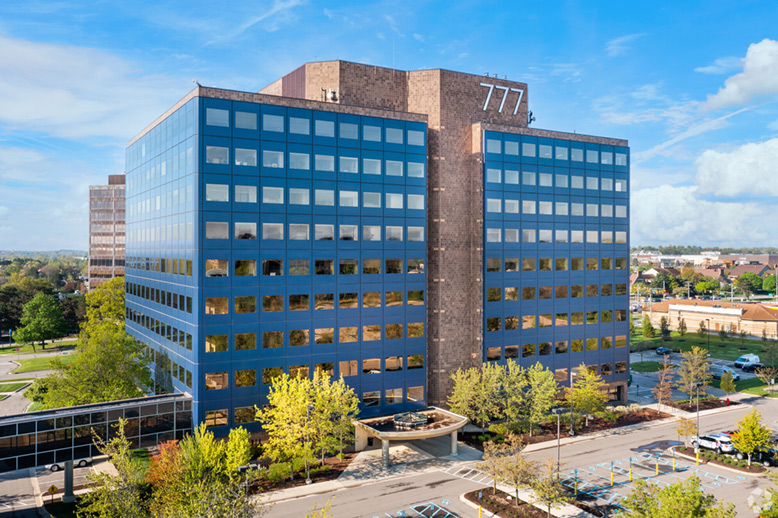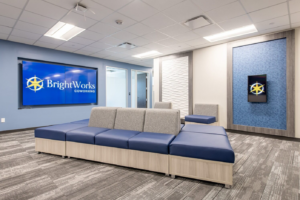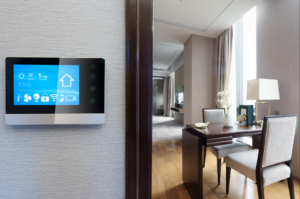Oxford is committed to diversity, equity and inclusion in our organization and the community.

2025 Commercial Real Estate Market Trends
Oxford Companies’ 5-Year Projection of Commercial Real Estate Trends
The commercial real estate (CRE) industry is a fast paced and ever changing industry, and is quickly becoming the backbone of the global economy. For real estate investors, understanding the shifting landscape of CRE is key to finding opportunities and mitigating risk in a more competitive market. By staying ahead of the curve and using data driven insights, investors can make informed decisions that drive long term success.
At Oxford Companies in Ann Arbor, we pride ourselves on staying ahead of the curve when it comes to commercial real estate. Our team of experts have compiled the top 5 commercial real estate trends of 2025, along with the data to back it up, so you can join us ahead of the game.
Want to take advantage of these trends in Ann Arbor? Reach out to Oxford to chat with our experts and start your Ann Arbor commercial real estate journey today!
Trend 1: Hybrid Workspaces
Hybrid workspaces are changing the commercial real estate landscape and creating new opportunities for investors. Companies across the country are balancing remote and in office work, which is driving demand for flexible office space.

- Coworking spaces have become a new sector in response to this shift, catering to businesses and professionals looking for flexibility and cost efficiency.
- At Oxford, we recognized this and launched Brightworks Coworking, with two great locations in Ann Arbor.
- Investors can get in on this trend by investing in properties that support hybrid models and shared office spaces.
- One driving factor in successful hybrid workspaces is premium amenities that enhance collaboration and productivity.
- Think free coffee and parking, as well as meeting rooms and private offices.
Trend 2: Sustainability and Green Buildings
Sustainability and green buildings are becoming top of mind in commercial real estate. More and more businesses are requiring green initiatives, and many are willing to pay extra for it. Investors and developers in 2025 are looking for:
- Energy efficient systems
- Renewable energy
- Water conservation
LEED certifications (Leadership in Energy and Environmental Design) and similar standards are becoming the benchmark for sustainable development. Investors can also enjoy Government incentives like:
- Tax credits for sustainable development
- Grants for green projects
Tenant demand for greener, healthier spaces is also increasing as occupants are valuing features like:
- Natural light
- Indoor air quality
- Green outdoor access
These drive higher tenant satisfaction and retention and ultimately higher returns on investment for CRE stakeholders.
“Tenants are often prepared to pay more to secure sustainable space. JLL research shows an average green premium of 7.1% across eight major cities in North America, 9.9% across nine cities in Asia Pacific and 11.6% in London.
Expectations around sustainable buildings are growing at a time when companies are also downsizing and opting for higher quality spaces,” says Jaime del Alamo, ESG Value & Risk Vice President at JLL
Source: JLL Insights & Trends.
Trend 3: Technology in CRE
The integration of technologies like Artificial Intelligence (AI), Internet of Things (IoT) and PropTech is changing commercial real estate. AI powered tools are streamlining property management by providing predictive maintenance analytics, energy usage optimization and customizable tenant services.
IoT devices like smart sensors and automated systems are enhancing building functionality by allowing real time monitoring of utilities and environmental conditions. This level of automation improves operational efficiency, reduces long term costs and creates a more sustainable space for tenants. PropTech is the umbrella term for all of this, providing digital solutions for leasing, property marketing and space management.
 Smart buildings are becoming a key part of this tech driven transformation and more central to modern CRE strategies. These buildings have interconnected systems that improve energy efficiency, tenant comfort and property management. For example, automated HVAC systems adjust to occupancy and weather conditions to reduce energy costs while maintaining optimal indoor conditions. By adopting these technologies, investors and property managers can save significant costs, improve the tenant experience and make their properties more competitive in an increasingly competitive market. The Urban Land Institute shares:
Smart buildings are becoming a key part of this tech driven transformation and more central to modern CRE strategies. These buildings have interconnected systems that improve energy efficiency, tenant comfort and property management. For example, automated HVAC systems adjust to occupancy and weather conditions to reduce energy costs while maintaining optimal indoor conditions. By adopting these technologies, investors and property managers can save significant costs, improve the tenant experience and make their properties more competitive in an increasingly competitive market. The Urban Land Institute shares:
“Applications for generative AI within real estate remain abundant, yet are mostly focused on property management and property marketing rather than investment decision making. Chatbots and digital companions that help with leasing, property management, and facilities management have rapidly increased in adoption in recent years.
Real estate companies… “ are embracing digital solutions that improve business performance by reducing costs or growing revenues. Further investment in data analytics capabilities will be key to optimizing portfolio, investment, and forecasting decisions; better understanding customer and tenant needs and preferences; and enhancing performance and efficiencies across the business.”
Source: ULI – Emerging Trends in Real Estate 2024
Trend 4: Suburban Shift and Urban Impact
The suburban shift is changing the CRE landscape as urban to suburban population movements are the driver. This trend is impacting demand as:
- Office spaces in suburbs are becoming more popular as businesses go hybrid.
- Retail in suburban neighborhoods is growing as residents want local convenience.
- Housing demand in suburbs is increasing as families want space and affordability.
Urban properties are responding to these challenges and stay competitive by:
- Re-purposing office spaces
- Introducing mixed use developments
- Targeting niche markets
Remote work has undergone a dramatic transformation, rising from 0.5% of US workdays in 1965 to 7% pre-pandemic, then surging to 28% by June 2023 after COVID-19 fundamentally changed work patterns. This shift to remote and hybrid work has created a “donut effect” in cities, with both residents and businesses moving away from central business districts toward suburbs, while also triggering what some call an “office real estate apocalypse” in major urban centers.
Looking forward, city centers may need to transform from primarily being places of work to becoming centers of consumption, with a gradual conversion of office space to residential use, though this transition faces challenges from zoning laws and building regulations.
Source: Quantitative Urban Economics
Trend 5: E-commerce and Industrial Real Estate
E-commerce has grown so much that it’s changed the industrial real estate landscape and is now driving demand for specific property types. Opportunities here include:
- Distribution centers for faster delivery times.
- Warehouses for inventory storage.
- Fulfillment properties for streamlined processing.

Investors can benefit by:
- Strategically locating assets near major urban hubs to improve connectivity and efficiency.
But there are challenges:
- Zoning regulations that can restrict development.
- Intense market competition as demand for prime industrial sites continues to grow.
Successful investment in industrial real estate requires a balanced approach, leveraging strategic opportunities while proactively addressing potential challenges, but can be very successful and profitable in the long-term!
What Does This Mean for Investors
These industrial real estate trends demonstrate a changing landscape that requires investors to be agile and forward thinking. Strategically located assets near urban centers offer great opportunities, proximity to consumers and reduced transportation costs.
But investors need to be aware of the challenges like complex zoning regulations that require patience and working with local authorities and fierce market competition that demands quick decisions and thorough research.
Diversifying the portfolio by exploring emerging markets or new property types like multi-story warehouses can mitigate risk and capitalize on future growth in this evolving sector.
2025 Commercial Real Estate Trends – Conclusion
By working with Oxford Companies in Ann Arbor, you get access to expert knowledge and resources to help you succeed in an extremely complex commercial real estate. Our team will provide you with valuable information and opportunities to make informed and smart decisions.
Whether you want to diversify your portfolio, invest in hotspots or try new property types, Oxford Companies is your partner every step of the way. Don’t wait – get in touch today!

